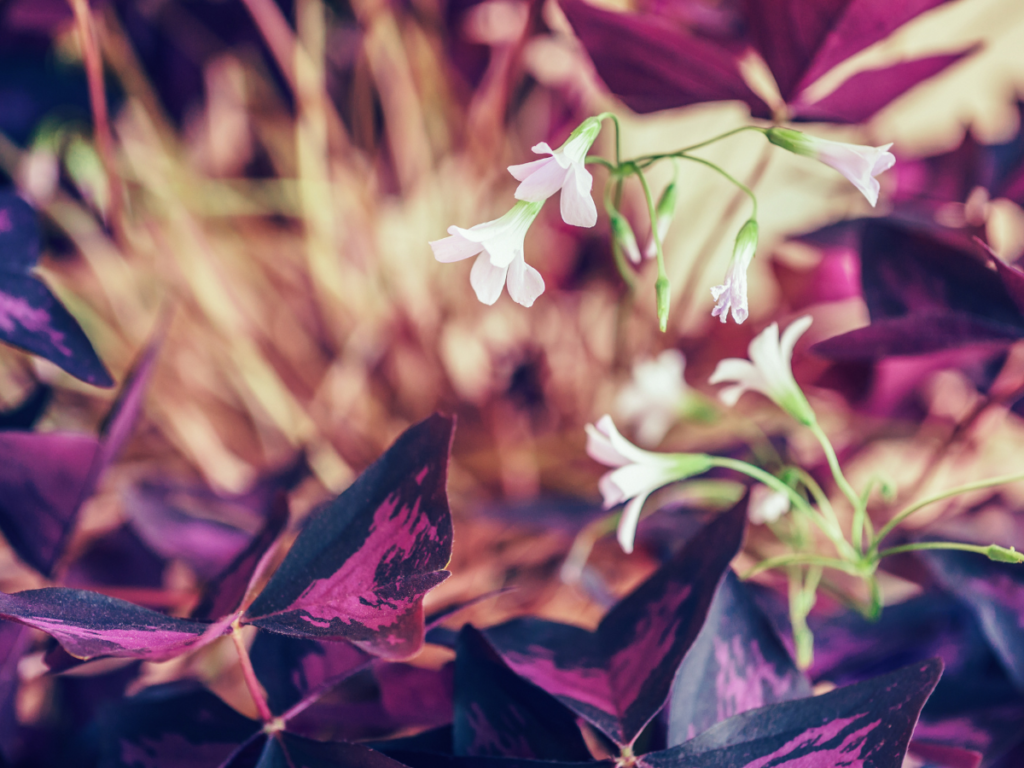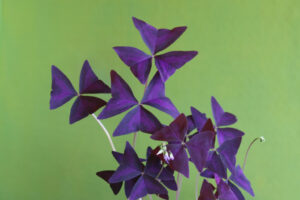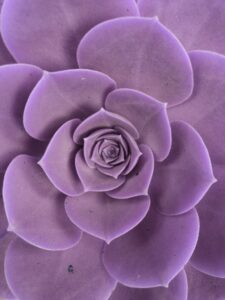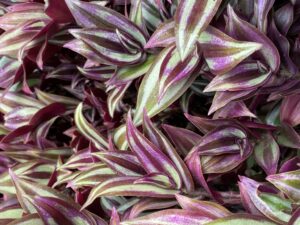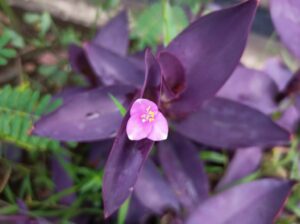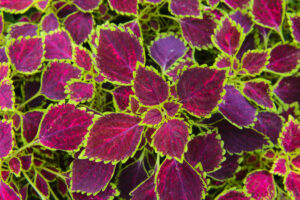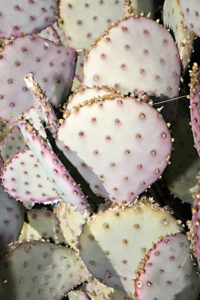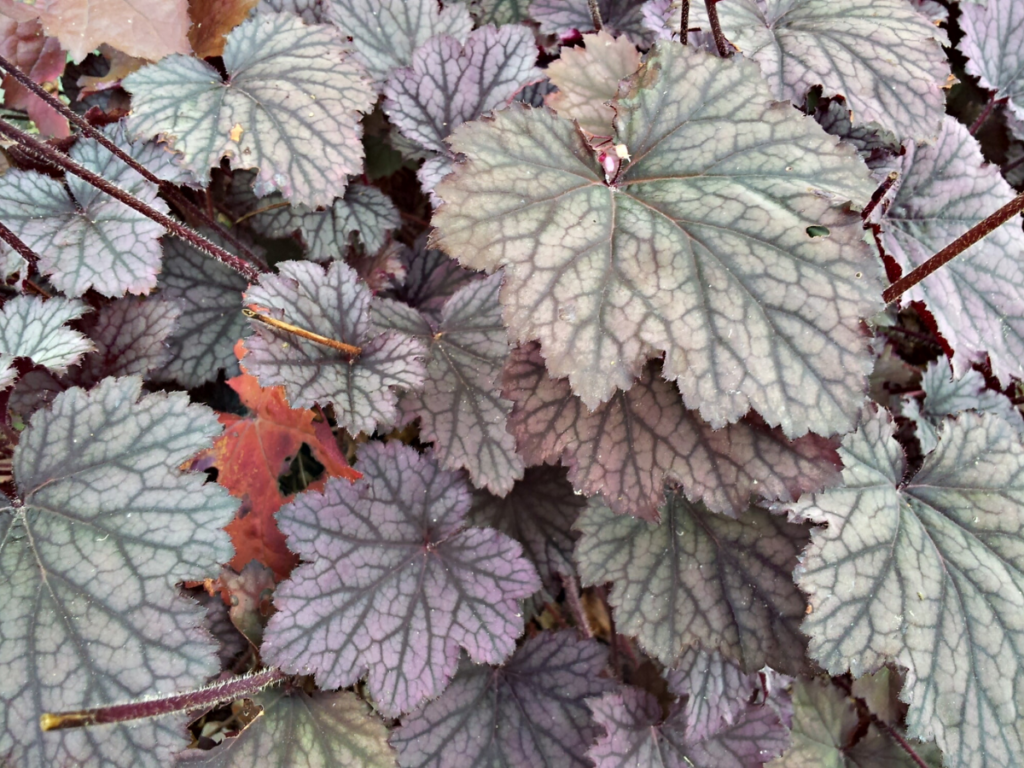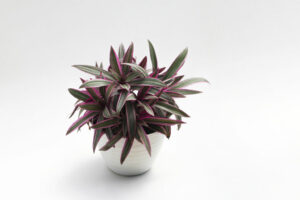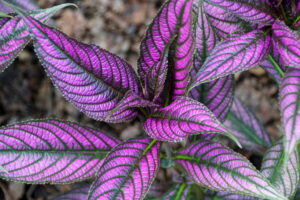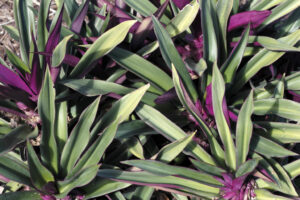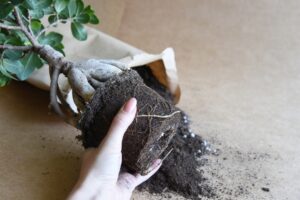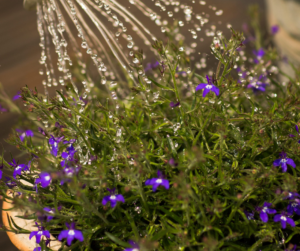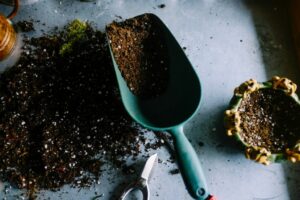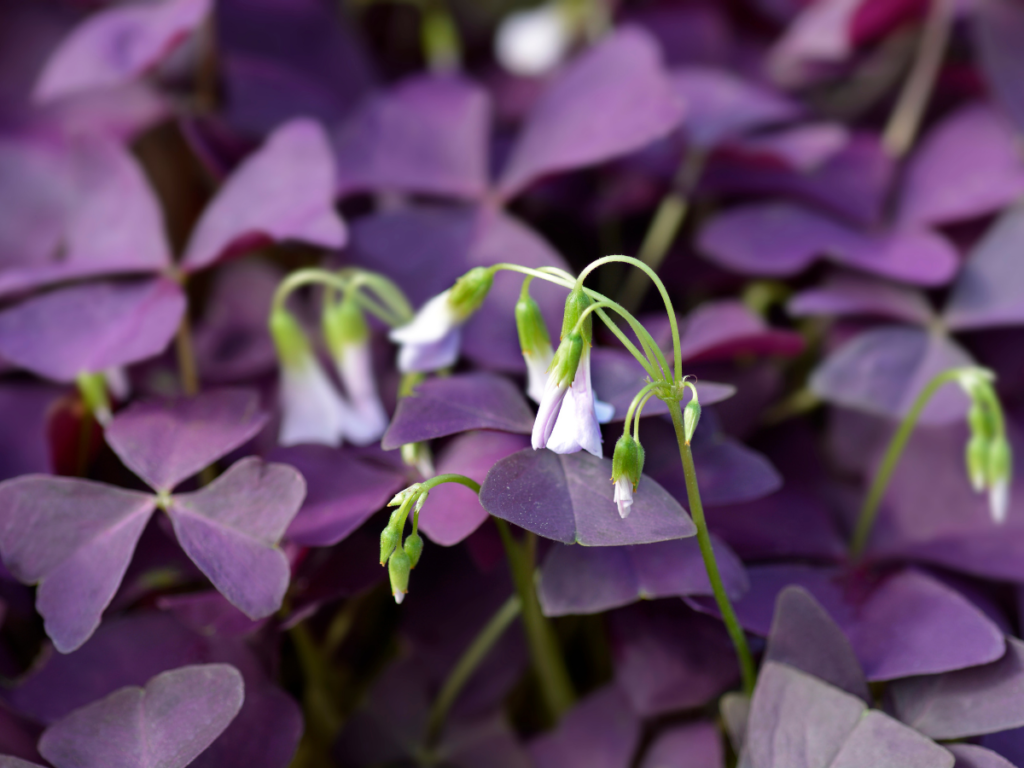HousePlantJoy is supported by our audience. When you purchase through one of our links, we may earn a small affiliate commission. As an Amazon Associate I earn from qualifying purchases. Your cost is not affected.
==================
Top 10 Houseplants With Purple Leaves
Do you want a houseplant with purple leaves that can brighten up your home with a vibrant and eye-catching vibe? Purple Houseplants are beautiful coloured purple foliage which stands out and will definitely capture everyone’s attention. The purple color plants are pleasing to everyone’s eyes since they will satisfy your aesthetic vibe. Moreover, It will present a radiant and fresh vibe to your home.
Most purple house plants are flowering plants with purple leaves. Purple symbolizes feelings and success, which is a great plant for motivational and inspirational presents.
What are Houseplant With Purple Leaves?
Purple Houseplants are a popular rare color palette species of plants, which usually turn purple if matured enough. They are the most amusing flowering color plants which represent tradition and royalty and are perfect for gift giving.
What’s also good with flowering purple foliage plants is that they are low maintenance and very easy to grow. Most purple plants are small and tiny, the reason why it is great in every home or office you have.
If you’re keen on one color houseplant only for your home renovation and decoration, the following houseplant with purple leaves is best for you.
How To Grow Purple Leaves?
Purple leaves indoor plants are low maintenance, easy to grow, and very easy to decorate. Since it has a unique feature as a houseplant, but some species may not have. For us to learn the easiest way to specifically know how to grow purple leaf house plants, Let’s take the Purple Leaf Sand Cherry as an example of how to grow purple leaf plants
Purple Leaf Sand Cherry
Prunus x cistena or most commonly known as Purple Leaf Sand Cherry is a summer or winter plant with reddish-purple foliage, usually medium-sized. It is an ornamental flowering plant that matures 8 feet tall and wide. This kind of purple leaf is a hybrid in Asia and a member of the rose family.
Although, Purple Leaf Sand Cherry can be sensitive in growing. Sand Cherry is propagating via rooted stem cutting or is readily available in nurseries, needing extra care. When growing a this plant, amending well-draining moist soil, mulching, thorough watering, and fertilizing are the important thing to do. Aside from that, full exposure to sunlight is important to grow properly and accordingly.
To finally introduce the purple leaves plants to you and make sure they will fit in your home renovation, We ranked them accordingly based on their capability to grow inside your home.
Top 10 Houseplants With Purple Leaves
1. Purple Shamrock (False Shamrock)
False Shamrock or Oxalis Triangularis is a perennial plant in the Oxalidaceae family native to South America. Purple leaves Shamrock does look like the original shamrock or clover but differs in color. It has trifoliate leaves that range in color green to a deeper crimson. This wood sorrel house plant typically prefers light shade, which is perfect and will suit your room for decor if you want it inside your home. It is commonly used and planted indoors as a houseplant. That is why it is perfect for your houseplant garden projects.
What’s also unique about this false shamrock is that the leaves automatically fold when uncomfortable with sunlight or disturbed at night. Also, even its petal flowers are closed every night.
How To Grow a Purple Shamrock?
Purple Shamrock usually matures for 3-5 years. This is the type of houseplant with purple leaves that loves a standard potting soil rich in humus and good drainage. With the help of bright indirect sunlight with a cool temperature, a purple shamrock can prosper well. Watering a purple shamrock when the topsoil is dry and keeping the bottom moist will keep its roots healthy.
You should also remember not to water it during winter.
Is Purple Shamrock Edible?
Yes, Purple Shamrock is edible. Raw or cooked purple shamrock is okay to eat. It’s up to you, but if you consume too much, it may cause you to discomfort because of its oxalic acid content.
Typically, the leaves and flowers are used as part of salad ingredients but expect an acidic taste since it has oxalic acid in them. Moreover, rhizomes of purple shamrock taste sweet when eaten raw or cooked.
Purple Shamrock Plant Benefits
Purple Shamrock can be dangerous if used or taken a lot like what we mentioned above, but if used properly, you can surely enjoy the benefits a Purple Shamrock can give you. To give an idea, so here are the following benefits Purple Shamrock has.
- Medical Purposes
A Purple Shamrock helps us as an antioxidant in our body which also serves as an anti-inflammatory that reduces arthritic pain and other illness but the most important benefit of Purple Shamrock is that it could lower your body’s cholesterol level. - Brings Goodluck
Just like the belief that a three-leaf plant like clover has, also a Purple Shamrock brings luck. The purple shamrock is a symbol and registered trademark of Ireland that is known to bring charm or good luck to them. Moreover, Irish legends believe that St. Patrick uses it as an educational symbol that explains the holy trinity. - Botanical Use
Purple Shamrock is one of many kinds of a houseplant with purple leaves that is perfect in terms of using as your plant collection or as a display and decoration for your house. Its unique color and characteristic will make your home cosier to look and pleasing to everyone’s eyes.
2. Echeveria
Purple Pearl or known as Echeveria, is a thick succulent type of houseplant with purple leaves which is native to Mexico. It somewhat looks round and pointy on its end, which has olive-green to lavender-rose leaves with pink margins. The more sun it gets, the rosier it becomes.
This type of purple plant is highly recommended for floral arrangements and wedding bouquets because of its beautiful appearance. You will never go wrong using this houseplant.
How To Keep Purple Succulents?
Purple Pearl loves sandy and well-drained soils in the partial shade of sunlight and needs bright light. When kept well, it will grow up to 6 inches tall and 12 inches wide. This plant pearl needs occasional water, especially during hot seasons and keeps dry during winter.
3. Wandering Jew
Tradescantia Zebrina or Wandering Jew is an adaptable house plant which is easy to grow and challenging to kill. A houseplant that loves bright light and slightly moist soil with proper intake of water ranging from average to medium and liquid fertilizer. The more bright or indirect light you give, the more foliage it gives. Furthermore, Wandering Jew is a popular easy-care plant with purple and green leaves that will surely freshen up any space in your house as a hanging or trailing purple leaf indoor plant.
This is the type of houseplant with purple leaves that are usually placed in a hanging basket for display since it has long trailing tendrils that should be kept confined and compact in its pot.
Wandering Jew Plant Benefits
Every house plant with purple leaves has its characteristics and uses, but more plants are beneficial especially for our health, not just for display and decoration. For you to have an idea, we’ve got a list to consider.
- Health and Medicinal Benefits
Wandering Jew or Tradescantia Zebrina is a good houseplant used as herbal tea or medicinal remedy. In Jamaica, they use it typically to treat their common colds. Also, many people use it to treat health problems and heal wounds such as high blood pressure or problems in women’s uterus. Some use it as a beverage with lemon as either a remedy or a tonic to improve one’s health condition, so they can consume sweetened and cold beverages. This plant is commonly used in these health problems because it has different combinations of herbs that can help a person to strengthen their blood and treat amenorrhea.
- Indoor and Outdoor Houseplant
Wandering Jew is an extraordinary ornamental houseplant with purple leaves that will possibly get messy if not cultivated properly at home but a perfect houseplant outdoors. A type of trailing plants that will stand out even if you place it alone on a corner of your garden.
4. Purple-Heart
If you want a perennial houseplant with purple leaves, Tradescantia Pallida or ‘Purple Heart’ is for you. These trailing violet-purple foliages with pink flowers that bloom every summer is a houseplant used often. Purpleheart is also known for its common name, Moses in the basket, Purple Spiderwort and Purple Queen. Every gardener loves to use it as a groundcover indoors, typically in hanging baskets or interiorscaping.
Purple Heart Indoor Care
A houseplant like Purple Heart is recommended for a place where a full or partial shade of sunlight is present for best results. Furthermore, you have to remember to protect it from strong wind, which can damage the plant, especially its stem.
For the soil, a Purple Queen can grow in well-drained organic soil that can still evenly stay moist. You can use a hanging basket or container to plant it, and it can also work well in rock gardens, borders or edge planting. More importantly, you have to be cautious because the juice of Purple Heart can be dangerous for both humans and your pet since it can cause irritation and redness if purple heart’s leaves and stem juice touch your skin.
5. Painted Nettle
Solenostemon Scutellarioides (coleus blumei hybrid) or Painted Nettle is like a painted flower in the form of foliage that comes from a Lamiaceae family. It is a flowering species of a houseplant with purple leaves that is native to Malaysia and Southeast Asia.
This type of plant is evergreen perennials plants which have bushy and woody stems and typically are outdoor bedding plant treated annually. It is also known for its two more names, namely, Coleus blumei and Plectranthus scutellarioides.
How To Take Care Of Painted Nettles?
Painted Nettle is a short-lived houseplant with purple leaves, so it needs proper and extra delicate care to grow. One of the types of plants that requires wet, well-drained soil to generally grow to a specific height. Some Painted Nettle can grow up to 2 meters but typically grows up to 0.5-1 meters.
This plant loves the intense light and needs to spend five minutes every few weeks trimming and pinching away every bloom that will emerge. If well cultivated, a Painted Nettle can have various shades and good pigmentation. Colors including green, white, yellow, cream, red, maroon, pink and dark purple can be exposed.
6. Purple Prickly Pear
Have you tried having a cactus-type house plant at home? Opuntia Macrocentra or Purple Prickly Pear is a long-spined cactus that you can find in the lower Southwestern United States and northwestern Mexico. It is a member of the prickly pear genus species that is known for producing purple pigmentation in its stem. Moreover, the Purple Prickly Pear species has black but sometimes light spines that primarily develop on the top of the pads.
You can immediately recognize a purple prickly pear by looking at its purple pads, which can grow even after a long period of time without water. The Cactus is known for being a low maintenance plant and can live even in the worst weather.
Purple Prickly Pear is also known by these common names:
- Black-Spined Prickly Pear
- Long-Spined Prickly Pear
- Purple Prickly Pear
- Redeye Prickly Pear
7. Purple Passion
Purple Passion, Purple Velvet or commonly called Gynura Aurantiaca, is an amazing house plant with purple-green leaves. Moreover, it is very easy to cultivate and creates a pleasant view when used as decoration or as a plant arrangement inside your house. It is native to the Indonesian island of Java and grows one to two feet tall.
In addition to that, a purple passion shines in a sunlight exposure since it has tiny and silky purple hairs on its leaves. This plant will surely brighten and freshen up any room, whether it is outside or indoors. Unlike many houseplants with purple leaves that take a few years before they reach their most beautiful stage but Purple Passion takes only a few months to reach it.
8. Moses In The Cradle
Moses-in-cradle or Tradescantia Spathacea is a type of houseplant with purple leaves that has a beautiful boat-shaped like, native to Mexico, Central America, and the West Indies. Aside from Moses-in-cradle, the following names are names which Moses-in-cradle is also known:
- Boat Lily
- Cradle Lily
- Oyster Plant
- Rhoeo discolor
- Moses-in-a-Boat
- Moses-in-the-Bullrushes
Boat Lily requires six to eight hours of bright and indirect light every day to grow. Placing this plant in a container in a sunny spot area but avoiding too much sunlight exposure will do. Every hue of its leaves is possible to fade if they are under too little or too much sunlight. This is the type of houseplant with purple leaves that is surely fit for your indoor planting or gardening, easy to maintain and most importantly, adds beauty and elegance to your room.
9. Purple Emperor
Have you already seen a Cherry Blossom? A Sedum Telephium or Purple Emperor looks like a cherry blossom in deep purple foliage with light to rosy pink bushes in it. This type of houseplant blooms late in the summer and produces broad panicles of ruby to red flowers that will surely last in autumn. Since Purple Emperor has many colorful flowers, it attracts butterflies that feed pollinating insects with their nectar late in every season. One of the amazing hardy perennial plants is a great option for hot, sunny borders and exotic gardening.
Purple Emperor’s flowers fade in autumn, but its leaves will surely last until the winter comes. Also, what’s best in this kind of houseplant is that it is very simple and easy to grow but is sometimes known as a hybrid stonecrop plant, which is well-known for its toughness or having to grow and develop in poor soil between rocks and stones.
10. Persian Shield Plant
Persian Shield or as scientifically known as Strobilanthes Dyeriana, is a tropical ornamental species which hails from Southeast Asia, specifically in humid Myanmar. A beautiful house plant with purple leaves you can have inside or out.
This kind of plant can quickly grow in a cool but humid and hot season. When full bloom, its foliages look amazing in iridescent or maybe metallic purple and rich in dark green edges that will definitely lighten up your room. Each Persian leaf can reach up to 7 inches and a width of 3 inches.
Benefits of Indoor Purple Plants
Did you know that a house plant with purple leaves can purify the air around you? Having beautiful houseplants inside your home is not just for home decoration but also good for everybody’s health. To give you some ideas on how great it could be if you choose to have houseplants with purple leaves inside your home.
- Air Purifiers
Everything that gives off pollution inside your home can instantly be wiped out by the use of your houseplants. Plants can absorb every impurity, which can help you have a nice sleep every night and clean air to breathe. - Relaxation and Pleasing Environment
The purple color and fragrance can be therapeutic sometimes. Purple signifies energy with luxury. Some purple houseplants are herbal and can be used for intake or can be used as the oil used for massage, which can help you relax while resting at home. - Stress Reliever
Isn’t it nice to see a room with a nice and refreshing look after a long day of work outside? Having a houseplant can help you rest or be happy even just by looking at its beautiful looks. Plants help us relieve our stress by taking care of them or just by using them as decorations inside your home.
Plant With Purple Leaves Underneath
Some houseplants with purple leaves differ in color combinations. There is green on top, full bloom of purple, dark purple, and such but I know you’re looking for a houseplant that has purple foliage or leaves underneath so we prepared a list of a houseplant for you.
Alocasia Amazonica Polly
Alocasia Amazonica Polly is a hybrid with large species of plants. A stunning house plant with purple leaves underneath that shines and sometimes with smaller leaves in it. It is a matching green and purple leaves houseplant you can choose especially if you want your house to look more elegant.
Oyster Plant
An Oyster Plant or also known as Boat Lily is a beautiful plant with purple leaves underneath that is native to Mexico, Brazil, and Guatemala. Boat Lily can grow and prosper well in a container or can be planted in your garden, especially in winter. This is the type of plant the color depends on how much intensity of sunlight it receives.
To give you more plants with purple leaves underneath, here they are.
- Calathea Rufibarba
- Calathea Rattlesnake
- Stromanthe Sanguinea
- Gynura Sarmentosa
- Calathea Veitchiana
- Calathea Medallion
How To Keep Purple Leaves Indoors Fresh and Alive?
It is important to avoid pests, bad weather and other things that can harm your houseplant. You need to ensure its safety and keep them fresh and alive but to do so, proper care and maintenance are needed.
The following are the tips that you should take in taking care of your plants to make sure they will grow fresh, alive and still kicking.
-
Repotting
When starting your garden, you have to make sure that you re-pot your plant after growing an inch or two in a plastic pot or other pot. It is to make sure that your plant will grow in a comfortable field or healthy soil and will give your plant plenty of space to grow.
-
Light and Watering
Enough water and light are very essential for many plants but not all of them need a lot. Many purple leaves just need some time to bathe and expose to sunlight in a specific hour as well as watering. Avoid them holding too much in the water as this may cause root rot. The same applies to the amount of sunlight they should receive. You have to follow the required watering and sunlight to specific purple leaves houseplant to maintain their freshness and to keep them alive longer. Remember, some plants need full sun. Others need a more filtered light. Still others require a shady location.
-
Soil and Fertilizer
Keeping the soil healthy and breathable for the plants is important. Giving them the necessary fertilizer. Look for a balanced, rich humus or a healthy soil like mixed soil, sandy, and many more. Knowing what type of fertilizer or soil you should use in a specific plant will keep them alive and healthy.
Conclusion
Indoor house plants with purple leaves are a great addition to your plant collection at home. It does guarantee not only health benefits or decorative benefits but also a radiant vibe which is very pleasing to everyone’s eye. Also, indoor house plants with purple leaves are just extraordinary! Why? Because they don’t just have a unique color but a characteristic that other plants may not have, that’s it. We hope that through this list helps you find the best indoor houseplants with purple leaves that you might like.
Read More:

